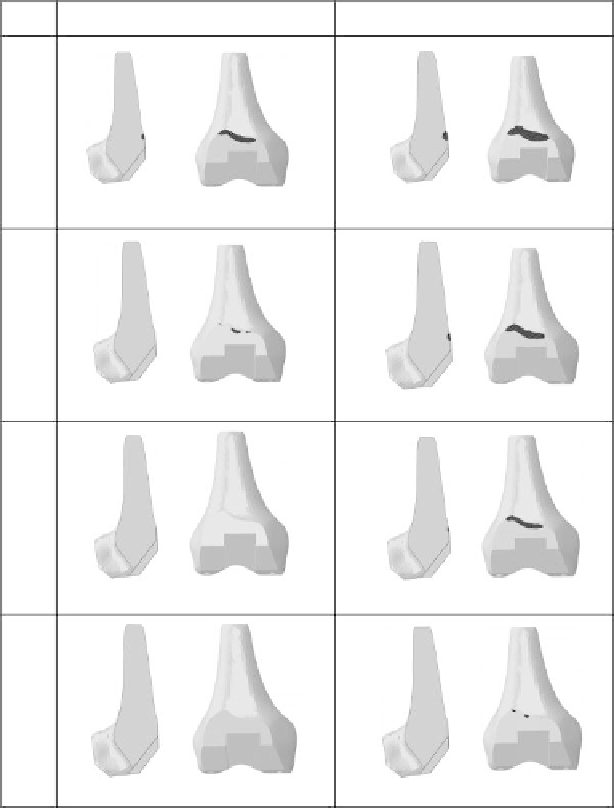Biomedical Engineering Reference
In-Depth Information
45-degree flexion
60-degree flexion
(a)
150 mm
3
450 mm
3
(b)
70 mm
3
191 mm
3
(c)
64 mm
3
93 mm
3
(d)
52 mm
3
70 mm
3
FIgure 8.6
Yielded volume of the trabeculae under 45-degree and 60-degree flexion with trabecular
stiffness: (a) 194.50 MPa; (b) 291.75 MPa; (c) 389.00 MPa; (d) 486.25 MPa.
8.4 rISk oF PerIProSthetIC FraCture
Extensive efforts have been made to understand the stress of the implant due to the importance of
wear and tear. There have been few studies to investigate the relationship between the weakening of
bone (which could be due to osteoporosis or rheumatoid arthritis) and the risk of knee arthroplasty.
This study conducted a parametric study on bone stiffness to evaluate the risk of periprosthetic
fracture via a computational platform.
High flexion angles predispose the patient to the risk of periprosthetic fracture, as presented
by the elevated compressive principal stress. Although the SR and PR presented a higher stress
magnitude at full extension, the compressive stress of the AF was three times higher in 60-degree
flexion. These stress concentration regions were also pronounced in an FE study conducted by
Tissakht, Ahmed, and Chan (1996), while the high stress in the AF also corresponded to a typical
periprosthetic fracture site (Culp et al. 1987; Zalzal et al. 2006). A sensitivity study on trabecular
stiffness was conducted to imitate the effect of osteoporotic degeneration, which imposes additional
risks to elderly patients. The association between trabecular stiffness and bone degeneration was

Search WWH ::

Custom Search